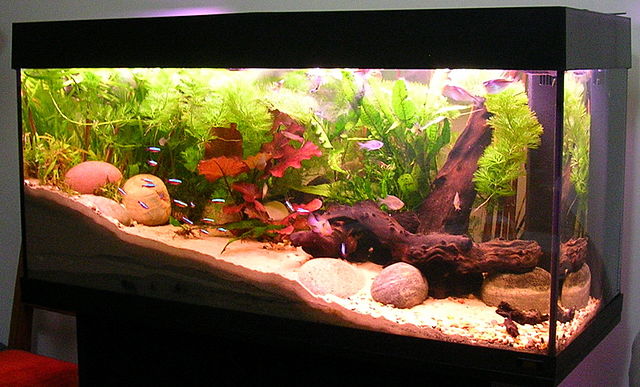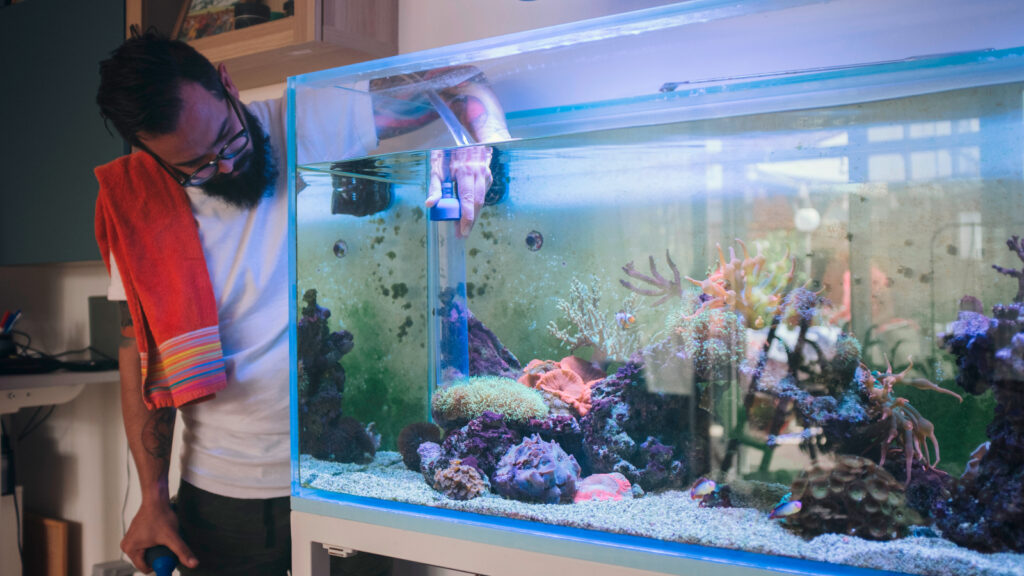“Water is the driving force of all nature.” — Leonardo da Vinci
Aquariums and garden ponds can be a stunning addition to any home or garden, offering a window into the underwater world. However, the beauty of these aquatic environments hinges on one crucial element: balance. Achieving harmony between fish and plants is essential for a thriving ecosystem. Did you know that a balanced aquarium can reduce the need for frequent water changes and chemical treatments by up to 50%? Let’s dive into the art of selecting fish and plants to create a balanced and harmonious aquatic environment.
The Science of Aquatic Balance
The relationship between fish and plants in an aquatic setting is symbiotic. Plants produce oxygen and absorb carbon dioxide and ammonia, creating a healthier environment for fish. In turn, fish produce waste that provides essential nutrients for plants. This natural cycle promotes a stable and self-sustaining ecosystem.

Selecting the Right Fish
Choosing the right fish is the first step towards creating harmony in your aquatic environment. Here are some factors to consider:
- Compatibility: Some fish are naturally aggressive and may harm plants or other fish. Research species that are known for their peaceful nature.
- Size and Growth: Fish that grow too large can disrupt the balance of your aquarium or pond. Consider the adult size of the fish.
- Diet: Herbivorous fish may eat your plants, while carnivorous fish may require specific feeding routines. Opt for omnivorous species for a balanced diet that supports plant life.
Popular Choices:
- Neon Tetras: Small, colorful, and peaceful, perfect for planted aquariums.
- Guppies: Hardy and easy to care for, ideal for beginners.
- Corydoras Catfish: Bottom dwellers that help clean the substrate.
Choosing the Right Plants
Plants play a vital role in maintaining water quality and providing shelter for fish. When selecting plants, consider:
- Light Requirements: Different plants have varying light needs. Match plants to the lighting conditions of your tank or pond.
- Growth Rate: Fast-growing plants help absorb more nutrients but may require frequent trimming.
- Substrate: Some plants require specific substrates to anchor their roots and absorb nutrients effectively.
Popular Choices:
- Anubias: Low light and easy to care for, perfect for beginners.
- Java Fern: Hardy and adaptable, can be attached to rocks or driftwood.
- Amazon Sword: Larger plant that provides excellent cover and oxygenation.
Creating Harmony: Practical Tips
Achieving balance involves more than just selecting the right species. Here are practical tips to maintain harmony:

Proper Planting and Placement
- Layering: Place taller plants at the back and shorter ones at the front to create depth and ensure all plants receive adequate light.
- Spacing: Avoid overcrowding to allow fish to swim freely and plants to grow properly.
Regular Maintenance
- Water Quality Testing: Regularly check pH, ammonia, nitrate, and nitrite levels to ensure a healthy environment.
- Pruning: Trim plants regularly to prevent overgrowth and maintain water circulation.
- Cleaning: Remove dead leaves and excess algae to prevent decay and nutrient imbalance.
Balanced Feeding
- Fish Food: Provide a balanced diet to avoid overfeeding, which can lead to excess waste and nutrient spikes.
- Fertilizers: Use aquatic plant fertilizers sparingly to promote plant growth without overwhelming the ecosystem.
Challenges and Solutions
Creating a balanced aquatic environment can present challenges, but they can be managed with the right strategies:

- Algae Blooms: Often caused by excess nutrients and light. Combat this with algae-eating fish or snails and reduce light exposure.
- Nutrient Deficiencies: Yellowing leaves or stunted growth indicate nutrient issues. Address these with proper fertilization and substrate enrichment.
- Fish Health: Stress, disease, or poor water conditions can impact fish health. Maintain regular monitoring and quarantining new fish.
A thriving aquatic environment is a rewarding achievement that showcases the beauty of nature’s balance. By carefully selecting compatible fish and plants, maintaining regular care, and addressing challenges proactively, you can create a stunning, harmonious aquatic ecosystem.





















